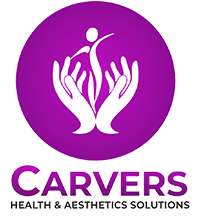
What is cryolipolysis?
What is cryolipolysis?
Cryolipolysis, often known as fat freezing, is a nonsurgical fat reduction method that involves freezing fat deposits in specific locations of the body. The procedure is designed to get rid of stubborn fat deposits or bulges that resist diet and exercise. Obese or extremely overweight individuals should avoid it. CoolSculpting is the name of the method that has been patented.
What bodily parts are the greatest candidates for cryolipolysis?
Cryolipolysis has been licenced by the Food and Drug Administration to treat fat deposits beneath the chin, upper arms, inner and outer thighs, belly, hip/flank (“love handles”), upper back (“brassiere rolls”), lower back, and beneath the buttocks.
How is cryolipolysis performed?
The layer of fat cells (adipocytes) beneath the skin is frozen using a handheld instrument called an applicator. A gel pad is first applied to the region to protect the skin. The fat bulge is then vacuumed or suctioned into the hollow hole of the applicator. You will feel a tugging or pulling sensation as the suction is applied. The severe cold, as well as other associated sensations such as tingling, stinging, hurting, and cramping, fade within 5 to 10 minutes as the area cools down and goes numb. The fat layer is gradually chilled to the optimal temperature of 30.2 to 39.2 degrees Fahrenheit.
An region can take up to an hour to treat. After the area has been treated, the applicator is removed. Massage the area for 2 to 3 minutes to help break down fat cells.
How are fat cells destroyed?
The method is based on the discovery that fat cells are more sensitive to cold damage than other cells, such as skin cells. The fat cells are damaged by the chilly temperature. The insult causes the body to respond with inflammation, which causes fat cells to die. Macrophages are white blood cells that are part of the body’s immune system and are “called to the damage spot” to remove dead fat cells and debris.
When can I expect to see benefits from cryolipolysis and how much localised fat can I expect to lose?
At roughly 4 months following first therapy, studies have indicated an average fat decrease of 15 to 28 percent. However, you may observe changes as soon as three weeks after treatment. There is a big improvement after around two months.
What are the advantages of cryolipolysis?
Cryolipolysis has numerous advantages.:
- There’s no need for a surgical incision.
- It is a procedure with a low risk. Infection is not a concern.
- The operation can be done as an outpatient treatment.
- Patients do not need to be sedated or anaesthetized prior to surgery.
- More than one body part can be treated in a single session.
- After therapy, most people can resume their normal daily activities right away.
- The approach can be used by people of all ages.
- There is no long-term damage to nerve fibres, blood vessels, or muscles in the treatment area.
What are the disadvantages of cryolipolysis?
Cryolipolysis has a number of drawbacks.:
- Only persons in good general health with no neurologic or orthopaedic disorders who want “spot” fat reduction in specific places of the body should undergo the operation. People who are significantly overweight or obese should avoid cryolipolysis.
- After healing, there is a chance that the skin surface will be irregular or uneven.
- A person’s intended goals may necessitate more than one session.
- If you need more than one therapy appointment, the second one cannot be booked until 6 to 8 weeks after the first. This is because removing damaged fat cells from the body can take a long time.
- The results do not appear right away. Because fat cells are gradually cleared from the body, optimal results can take 3 to 6 months.
What kind of side effects might you expect right after cryolipolysis?
Some of the areas that are being treated may experience temporary adverse effects.:
- Pain or aches
- Stinging or tingling of the skin
- Redness
- Swelling
- Skin discoloration or bruising
How many sessions of cryolipolysis are usually required?
It’s possible that you only have one problem and only need one therapy session. You may have multiple problem areas that require therapy, or you may require multiple treatments in one location to get your desired outcome. You and your doctor will work out a treatment plan – including the number of sessions – that will help you accomplish your goals.
